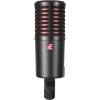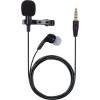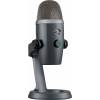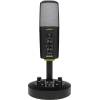Mikrofon Testberichte (S. 10/21)
Diese Quellen haben wir neutral ausgewertet (letzter Test vom ):
Mikrofone Bestenliste

Gesangsmikrofon

Funkmikrofon

Kamera-Mikrofon

Handy-Mikrofon
749 Ergebnisse entsprechen den Suchkriterien
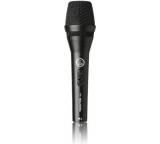
Gut
1,8
AKG Perception Live P 3 S
- Typ: Gesangsmikrofon
- Technologie: Dynamisch
- Richtcharakteristik: Niere
Zum Produkt

Gut
1,8
- Typ: Kamera-Mikrofon, Richtmikrofon
- Technologie: Kondensator
- Richtcharakteristik: Superniere
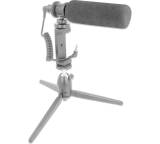
ohne Endnote
Delock Vlog Shotgun Mikrofon Set
- Typ: Podcastmikrofon, Handy-Mikrofon, Tischmikrofon, Richtmikrofon
- Technologie: Kondensator
- Richtcharakteristik: Superniere
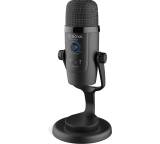
Sehr gut
1,5
- Typ: Funkmikrofon, Podcastmikrofon, Tischmikrofon
- Technologie: Kondensator
- Richtcharakteristik: Niere, Omnidirektional (Kugel)
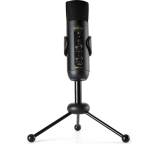
Gut
1,8
- Typ: Podcastmikrofon, Tischmikrofon
- Technologie: Elektret, Kondensator
- Richtcharakteristik: Niere
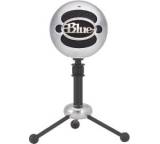
Gut
1,7
Blue Microphones Snowball
- Typ: Richtmikrofon
- Technologie: Kondensator
- Richtcharakteristik: Direktional (Keule), Niere, Omnidirektional (Kugel)
Zum Produkt
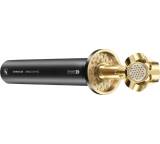
Sehr gut
1,0
- Technologie: Kondensator
- Richtcharakteristik: Niere
- Anschluss: XLR
Zum Produkt
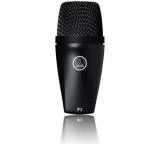
Sehr gut
1,3
AKG Perception Live P 2
- Typ: Instrumentenmikrofon
- Technologie: Dynamisch
- Richtcharakteristik: Niere
Zum Produkt
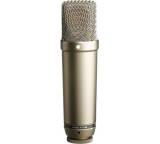
Sehr gut
1,3
Rode Microphones NT1-A/MP
- Typ: Gesangsmikrofon
- Technologie: Kondensator
- Richtcharakteristik: Stereo, Niere
Zum Produkt

Gut
1,6
- Typ: Instrumentenmikrofon
- Technologie: Dynamisch
- Richtcharakteristik: Superniere
Zum Produkt
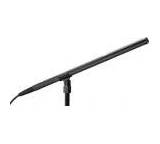
Sehr gut
1,5
- Typ: Kamera-Mikrofon, Richtmikrofon
- Technologie: Elektret, Kondensator
- Richtcharakteristik: Direktional (Keule), Hyperniere
Zum Produkt
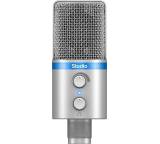
Gut
1,8
IK Multimedia iRig Mic Studio
- Typ: Handy-Mikrofon, Instrumentenmikrofon, Gesangsmikrofon
- Technologie: Kondensator
- Richtcharakteristik: Niere
Zum Produkt
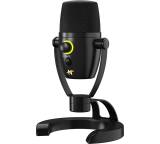
Gut
1,8
- Typ: Podcastmikrofon, Tischmikrofon
- Technologie: Kondensator
- Richtcharakteristik: Niere
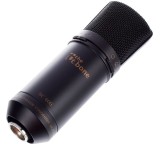
Sehr gut
1,0
- Typ: Instrumentenmikrofon, Gesangsmikrofon
- Richtcharakteristik: Niere, Omnidirektional (Kugel)
- Anschluss: XLR
Zum Produkt
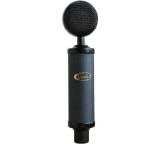
Sehr gut
1,3
- Typ: Gesangsmikrofon
- Technologie: Kondensator
- Richtcharakteristik: Niere
Zum Produkt
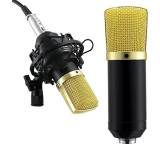
ohne Endnote
- Typ: Handy-Mikrofon, Gesangsmikrofon
- Technologie: Kondensator
- Anschluss: XLR
Zum Produkt
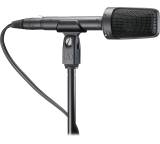
Sehr gut
1,1
- Typ: Kamera-Mikrofon
- Technologie: Kondensator
- Richtcharakteristik: Stereo, Niere
Zum Produkt
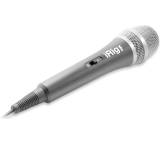
Gut
2,1
- Typ: Richtmikrofon
- Technologie: Kondensator
- Richtcharakteristik: Niere
Zum Produkt
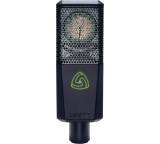
Sehr gut
1,0
- Typ: Instrumentenmikrofon, Gesangsmikrofon
- Technologie: Kondensator
- Richtcharakteristik: Superniere, Bidirektional (Acht), Breite Niere, Niere, Omnidirektional (Kugel)
Zum Produkt
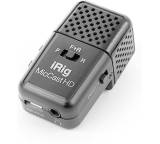
ohne Endnote
IK Multimedia iRig Mic Cast HD
- Typ: Handy-Mikrofon
- Technologie: Elektret, Kondensator
- Richtcharakteristik: Bidirektional (Acht), Direktional (Keule)

Gut
2,0
Boya BY-WM 4 Pro K2
- Typ: Kamera-Mikrofon, Funkmikrofon, Handy-Mikrofon
- Richtcharakteristik: Omnidirektional (Kugel)
- Anschluss: Klinke (3,5 mm)

Sehr gut
1,2
Neumann TLM 102
- Typ: Instrumentenmikrofon, Gesangsmikrofon
- Technologie: Kondensator
- Richtcharakteristik: Niere
Zum Produkt
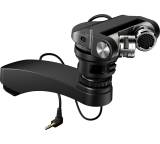
Gut
1,8
- Typ: Kamera-Mikrofon
- Technologie: Kondensator
- Richtcharakteristik: Stereo, Niere
Zum Produkt
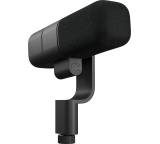
Sehr gut
1,5
- Typ: Podcastmikrofon
- Technologie: Dynamisch
- Richtcharakteristik: Superniere
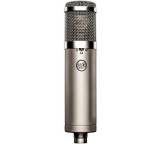
Gut
1,6
- Typ: Instrumentenmikrofon, Gesangsmikrofon
- Technologie: Kondensator
- Richtcharakteristik: Bidirektional (Acht), Niere, Omnidirektional (Kugel)
Zum Produkt
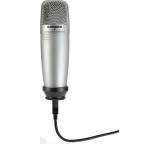
Gut
1,8
- Typ: Instrumentenmikrofon
- Technologie: Kondensator
- Anschluss: USB
Zum Produkt
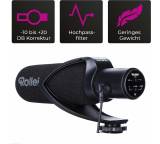
Gut
1,9
- Typ: Kamera-Mikrofon, Richtmikrofon
- Richtcharakteristik: Hyperniere
- Anschluss: Klinke (3,5 mm)
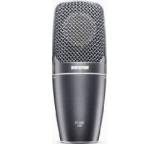
Gut
2,2
- Typ: Gesangsmikrofon
- Technologie: Kondensator
- Richtcharakteristik: Niere
Zum Produkt

Gut
1,8
- Typ: Podcastmikrofon, Tischmikrofon
- Technologie: Kondensator
- Richtcharakteristik: Niere
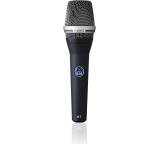
Gut
1,9
- Typ: Gesangsmikrofon
- Technologie: Dynamisch
- Richtcharakteristik: Superniere
Zum Produkt
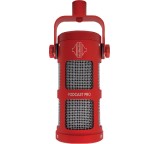
Sehr gut
1,2
- Typ: Podcastmikrofon
- Technologie: Dynamisch
- Richtcharakteristik: Superniere
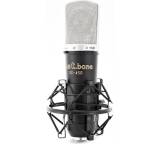
Sehr gut
1,5
- Typ: Instrumentenmikrofon, Gesangsmikrofon
- Technologie: Kondensator
- Richtcharakteristik: Niere
Zum Produkt
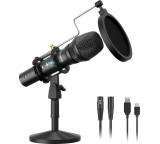
Gut
1,6
- Typ: Podcastmikrofon, Tischmikrofon, Gesangsmikrofon
- Technologie: Dynamisch
- Richtcharakteristik: Niere
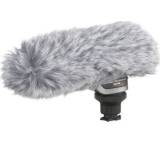
Gut
1,9
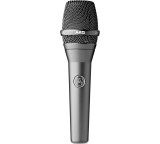
Sehr gut
1,3
- Typ: Instrumentenmikrofon, Gesangsmikrofon
- Technologie: Elektret, Kondensator
- Richtcharakteristik: Niere
Zum Produkt

Gut
1,8
Streamplify Mic Tripod
- Typ: Podcastmikrofon, Tischmikrofon
- Technologie: Kondensator
- Richtcharakteristik: Niere
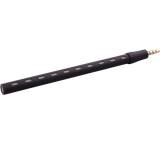
Befriedigend
3,1
- Typ: Kamera-Mikrofon
- Technologie: Elektret, Kondensator
- Richtcharakteristik: Breite Niere
Zum Produkt
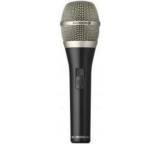
Sehr gut
1,5
- Typ: Gesangsmikrofon
- Technologie: Dynamisch
- Richtcharakteristik: Niere
Zum Produkt

Sehr gut
1,2
- Typ: Gesangsmikrofon
- Technologie: Dynamisch
- Richtcharakteristik: Superniere
Zum Produkt

Gut
1,8
- Typ: Instrumentenmikrofon, Gesangsmikrofon
- Technologie: Kondensator
- Richtcharakteristik: Bidirektional (Acht), Niere, Omnidirektional (Kugel)
Zum Produkt
Tests
-

-
c't
- Ausgabe: 3/2025
- Erschienen: 01/2025
-
-

-
PC Magazin/PCgo
- Ausgabe: 4/2025
- Erschienen: 03/2025
- Seiten: 1
Mikrofon speziell für Gamer und Streamer?
Testbericht über 1 Mikrofonzum Test -
-

-
MAC LIFE
- Ausgabe: 11/2024
- Erschienen: 10/2024
- Seiten: 8
-






